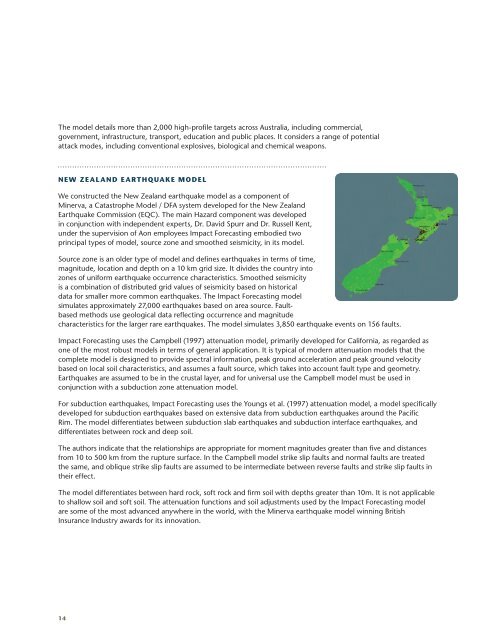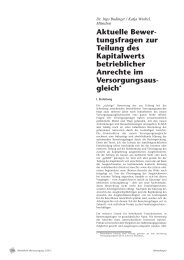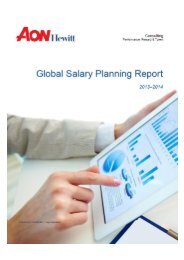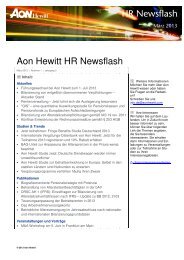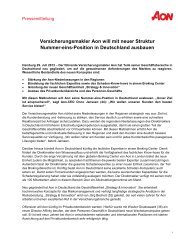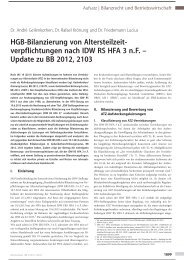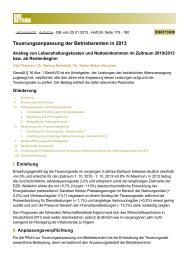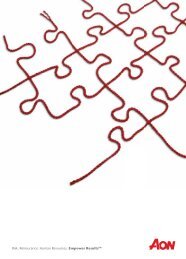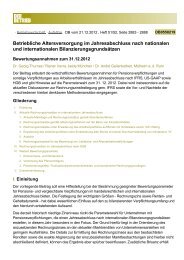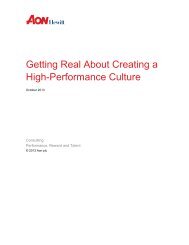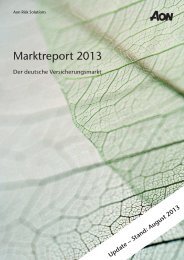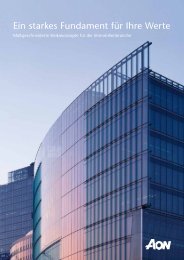IMPACT FORECASTING - Aon
IMPACT FORECASTING - Aon
IMPACT FORECASTING - Aon
You also want an ePaper? Increase the reach of your titles
YUMPU automatically turns print PDFs into web optimized ePapers that Google loves.
The model details more than 2,000 high-profile targets across Australia, including commercial,<br />
government, infrastructure, transport, education and public places. It considers a range of potential<br />
attack modes, including conventional explosives, biological and chemical weapons.<br />
NEW zEALANd EARThqUAkE MOdEL<br />
We constructed the New Zealand earthquake model as a component of<br />
Minerva, a Catastrophe Model / DFA system developed for the New Zealand<br />
Earthquake Commission (EQC). The main Hazard component was developed<br />
in conjunction with independent experts, Dr. David Spurr and Dr. Russell Kent,<br />
under the supervision of <strong>Aon</strong> employees Impact Forecasting embodied two<br />
principal types of model, source zone and smoothed seismicity, in its model.<br />
Source zone is an older type of model and defines earthquakes in terms of time,<br />
magnitude, location and depth on a 10 km grid size. It divides the country into<br />
zones of uniform earthquake occurrence characteristics. Smoothed seismicity<br />
is a combination of distributed grid values of seismicity based on historical<br />
data for smaller more common earthquakes. The Impact Forecasting model<br />
simulates approximately 27,000 earthquakes based on area source. Faultbased<br />
methods use geological data reflecting occurrence and magnitude<br />
characteristics for the larger rare earthquakes. The model simulates 3,850 earthquake events on 156 faults.<br />
Impact Forecasting uses the Campbell (1997) attenuation model, primarily developed for California, as regarded as<br />
one of the most robust models in terms of general application. It is typical of modern attenuation models that the<br />
complete model is designed to provide spectral information, peak ground acceleration and peak ground velocity<br />
based on local soil characteristics, and assumes a fault source, which takes into account fault type and geometry.<br />
Earthquakes are assumed to be in the crustal layer, and for universal use the Campbell model must be used in<br />
conjunction with a subduction zone attenuation model.<br />
For subduction earthquakes, Impact Forecasting uses the Youngs et al. (1997) attenuation model, a model specifically<br />
developed for subduction earthquakes based on extensive data from subduction earthquakes around the Pacific<br />
Rim. The model differentiates between subduction slab earthquakes and subduction interface earthquakes, and<br />
differentiates between rock and deep soil.<br />
The authors indicate that the relationships are appropriate for moment magnitudes greater than five and distances<br />
from 10 to 500 km from the rupture surface. In the Campbell model strike slip faults and normal faults are treated<br />
the same, and oblique strike slip faults are assumed to be intermediate between reverse faults and strike slip faults in<br />
their effect.<br />
The model differentiates between hard rock, soft rock and firm soil with depths greater than 10m. It is not applicable<br />
to shallow soil and soft soil. The attenuation functions and soil adjustments used by the Impact Forecasting model<br />
are some of the most advanced anywhere in the world, with the Minerva earthquake model winning British<br />
Insurance Industry awards for its innovation.<br />
14


